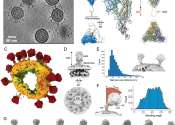Research dives into the social network of proteins
Stanley Milgram's groundbreaking "Six Degrees of Separation" experiment demonstrated the surprisingly close connections among humans back in the 1960s. Now the research team led by Professor Matthias Mann at the Max Planck ...









